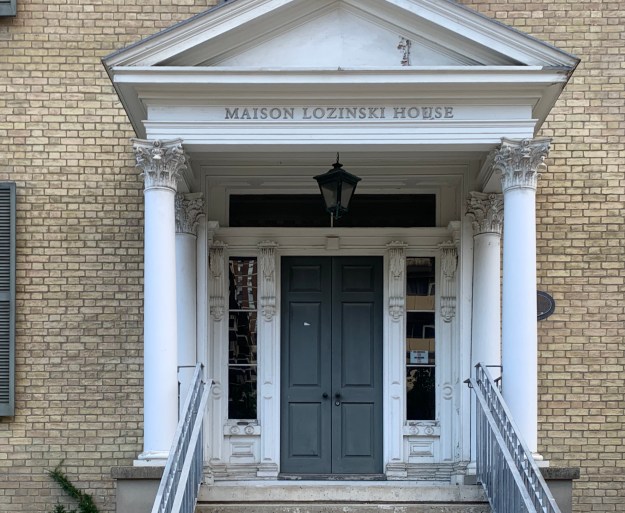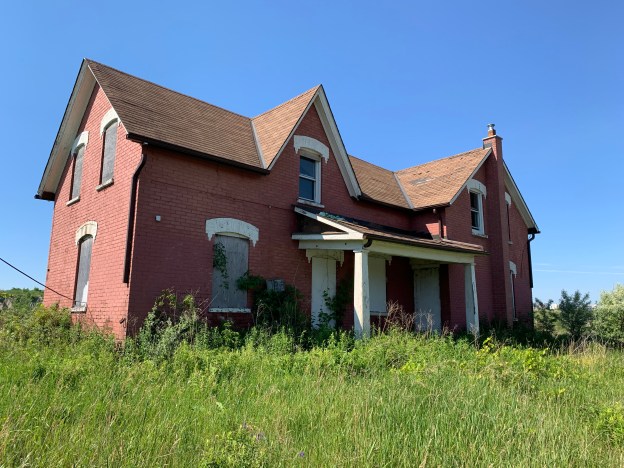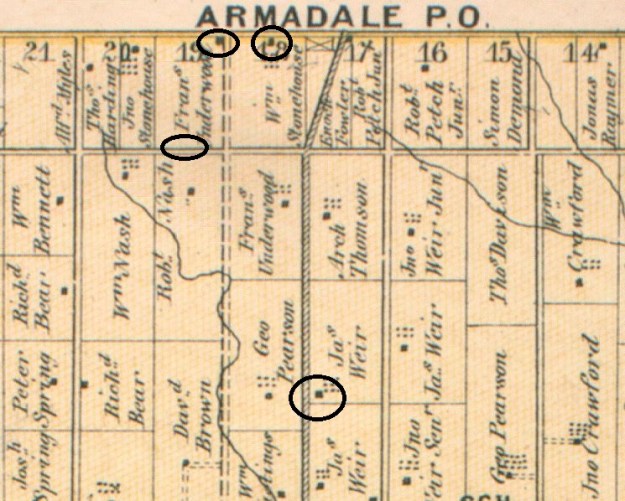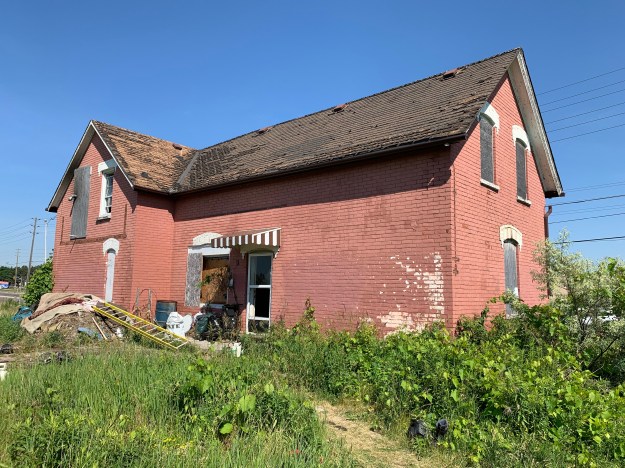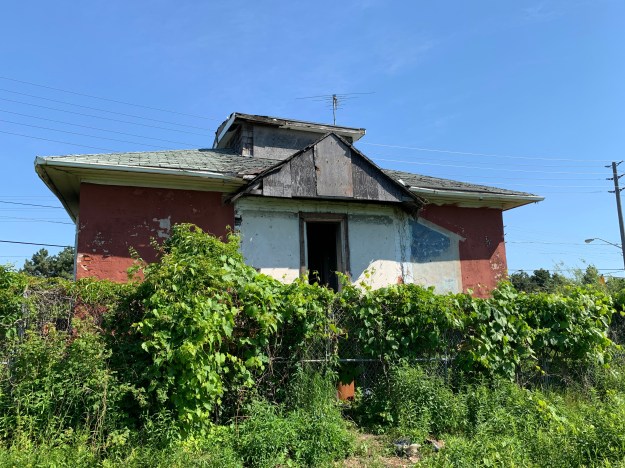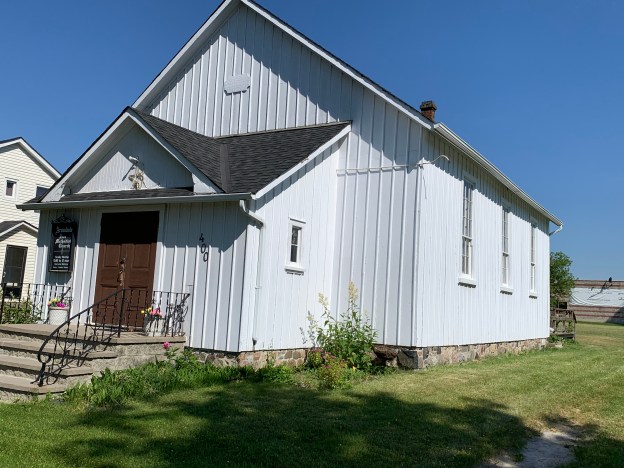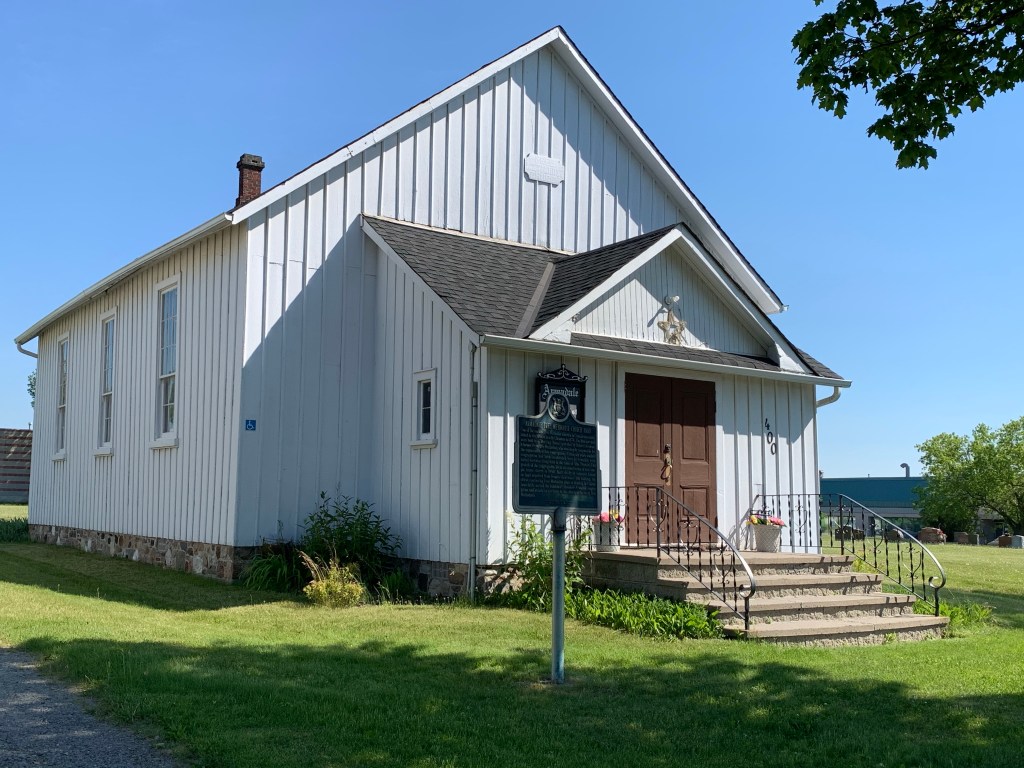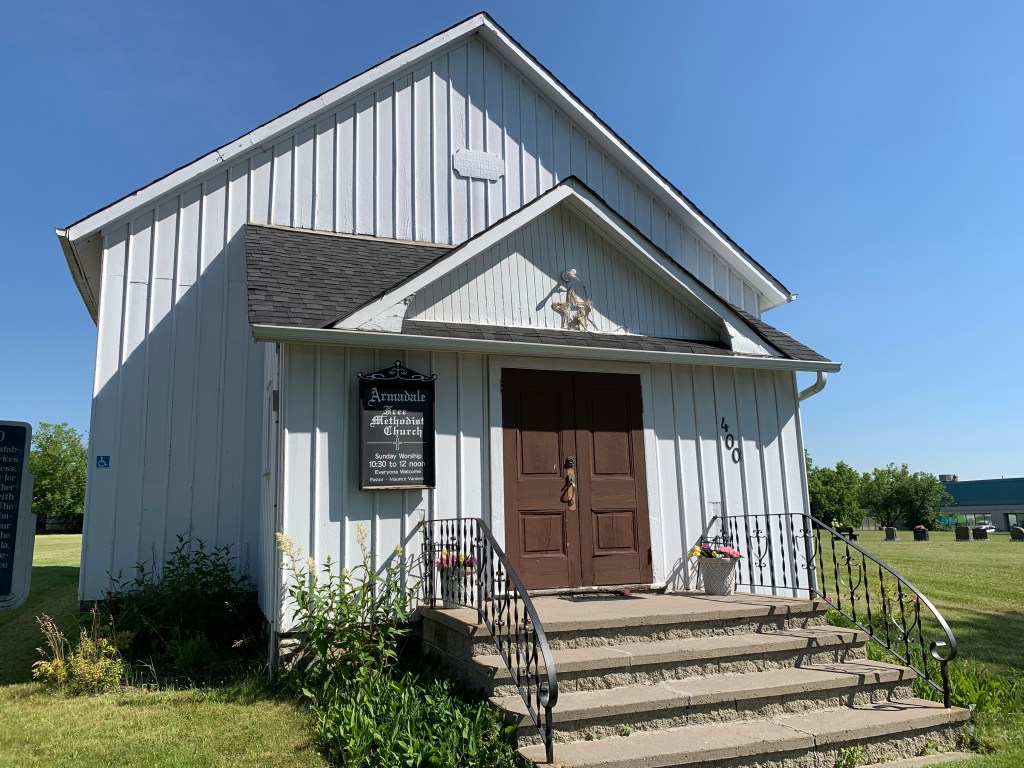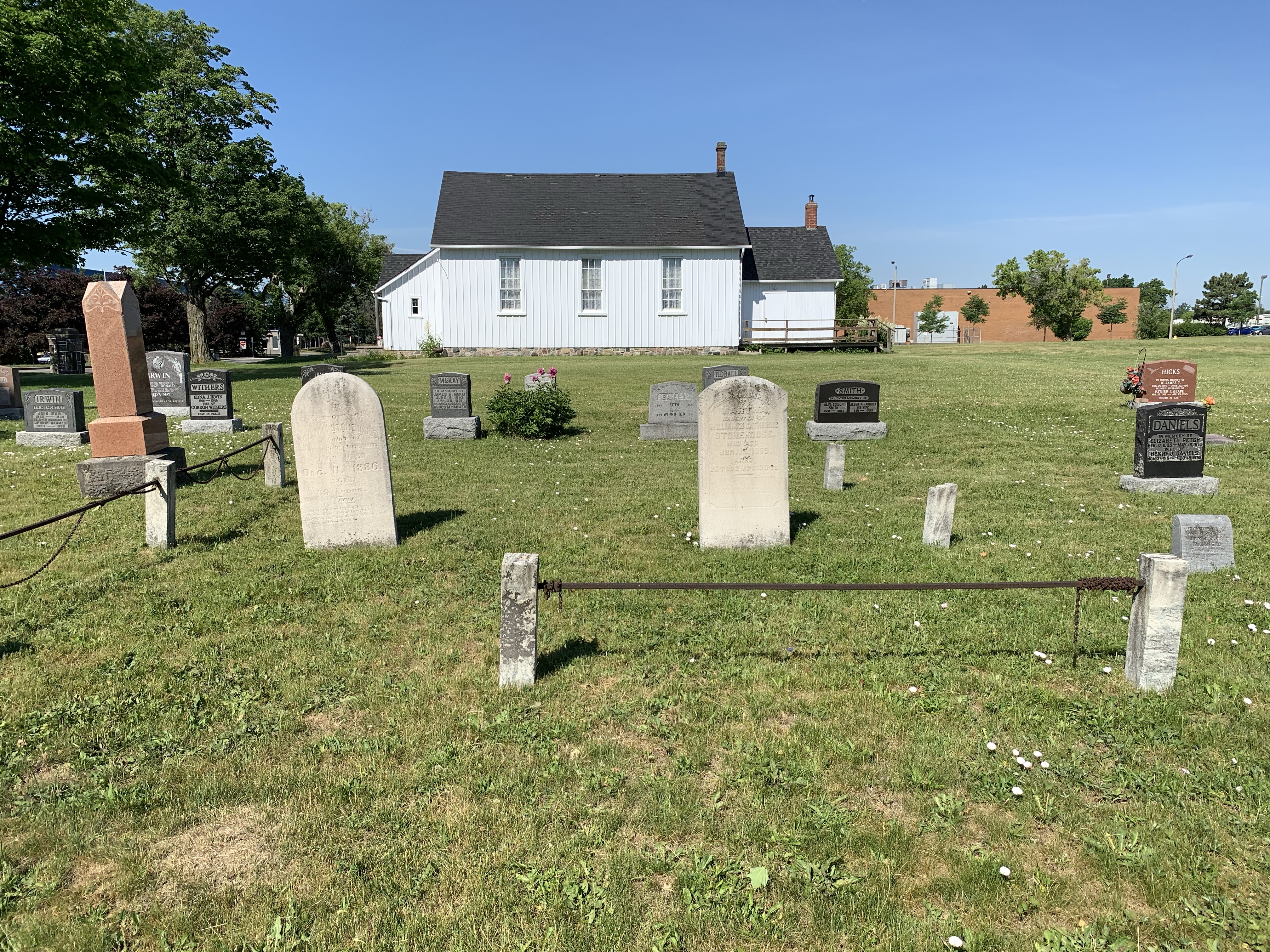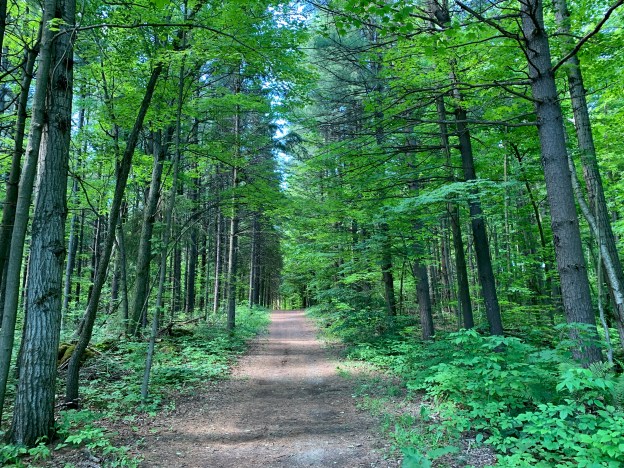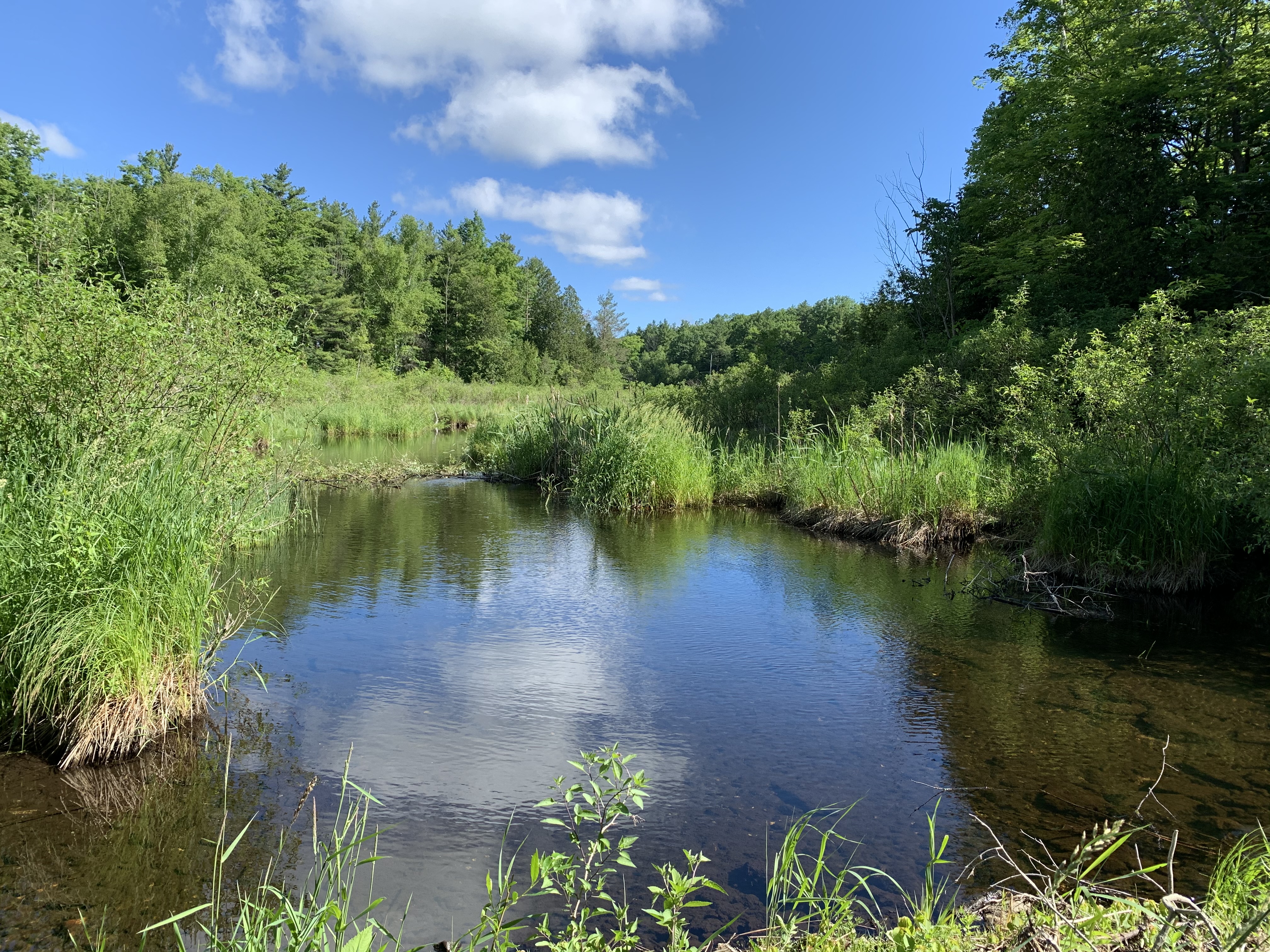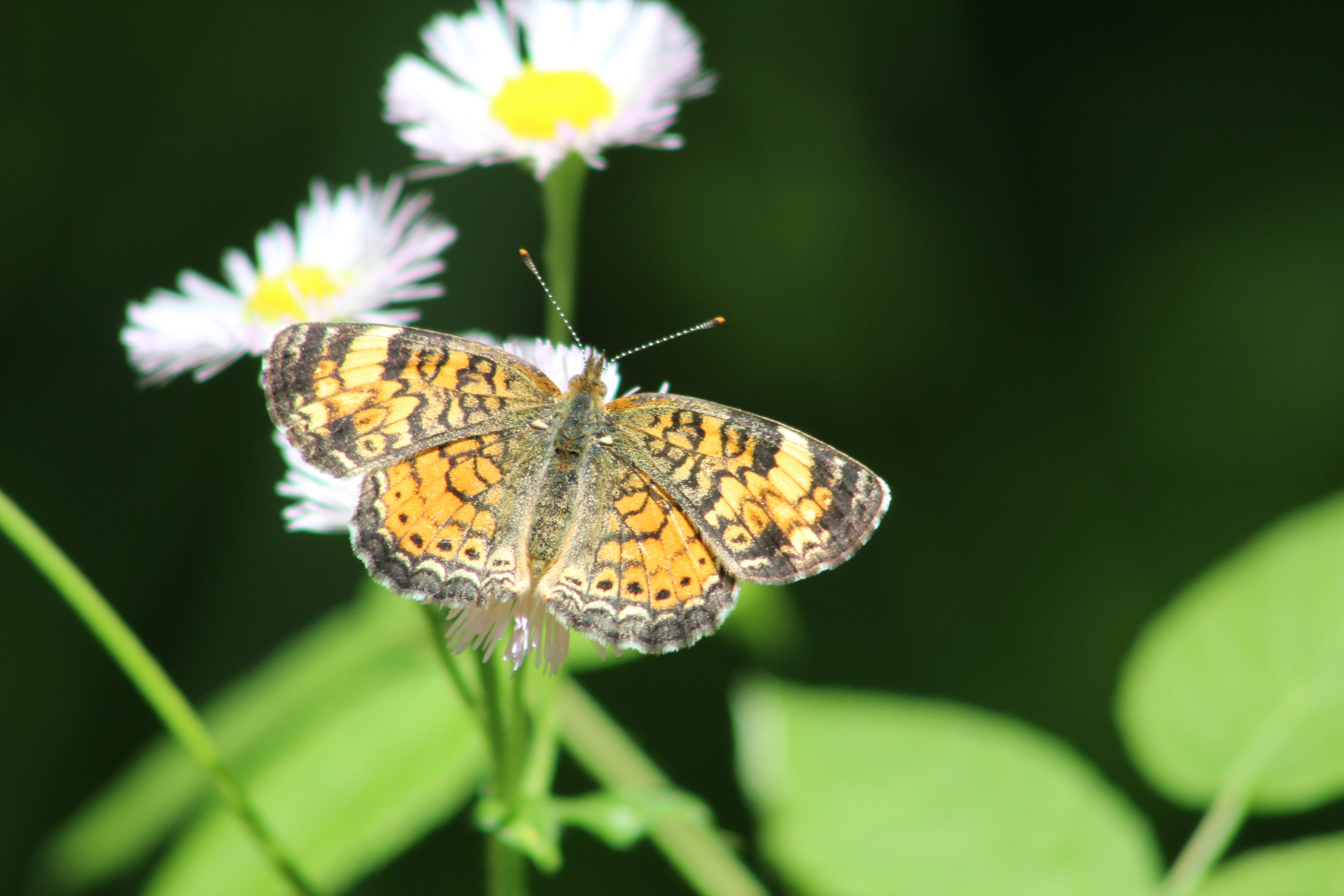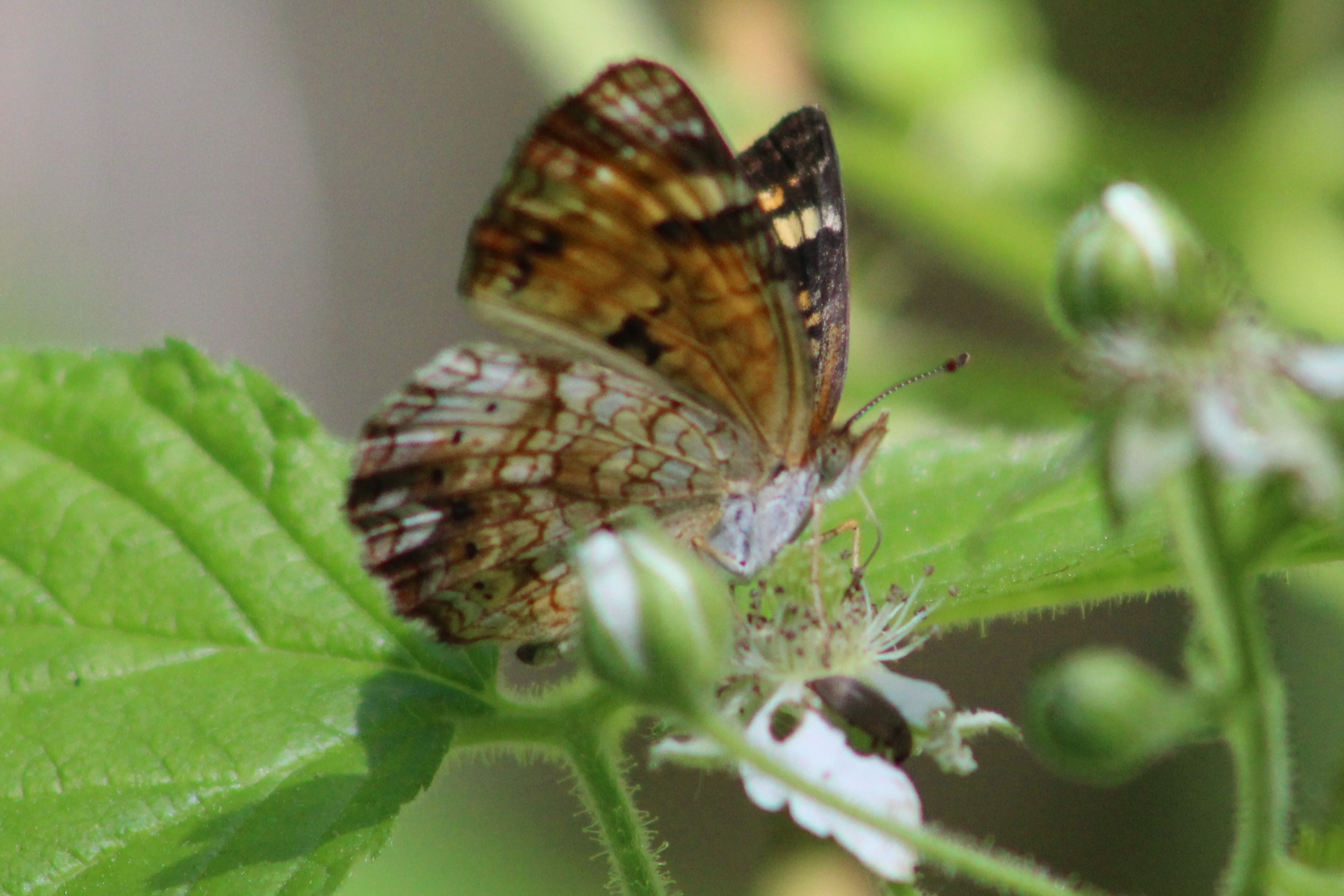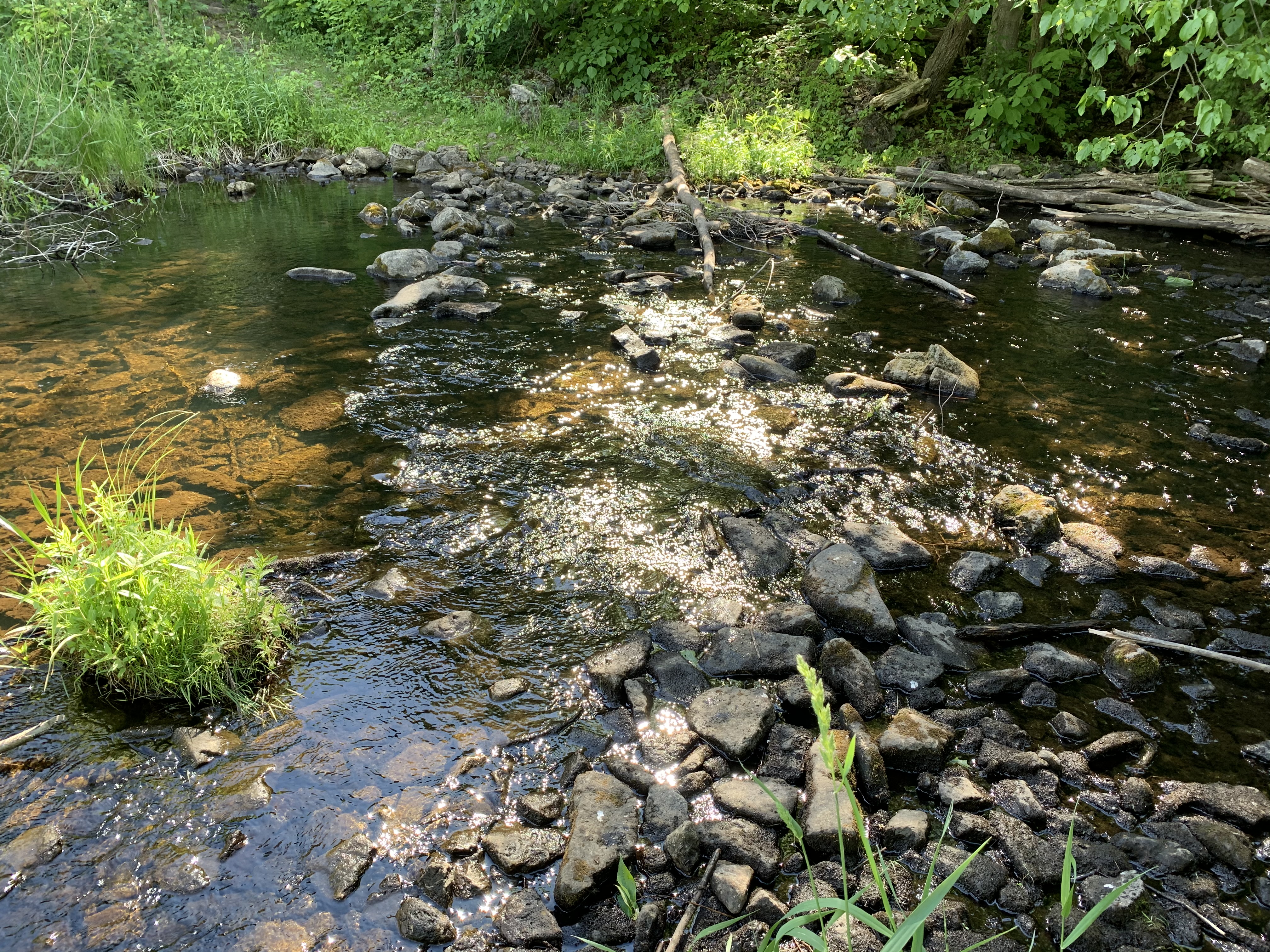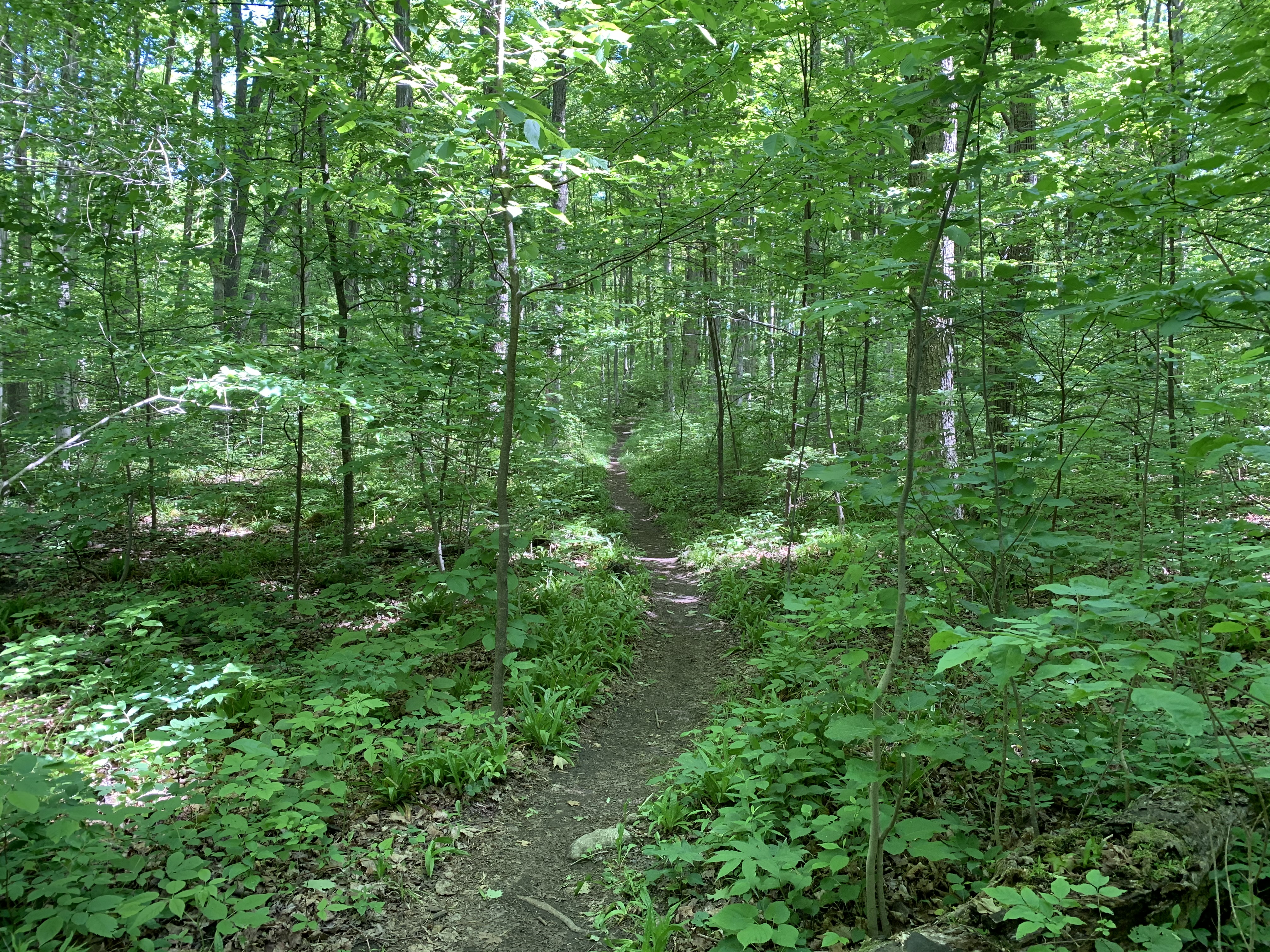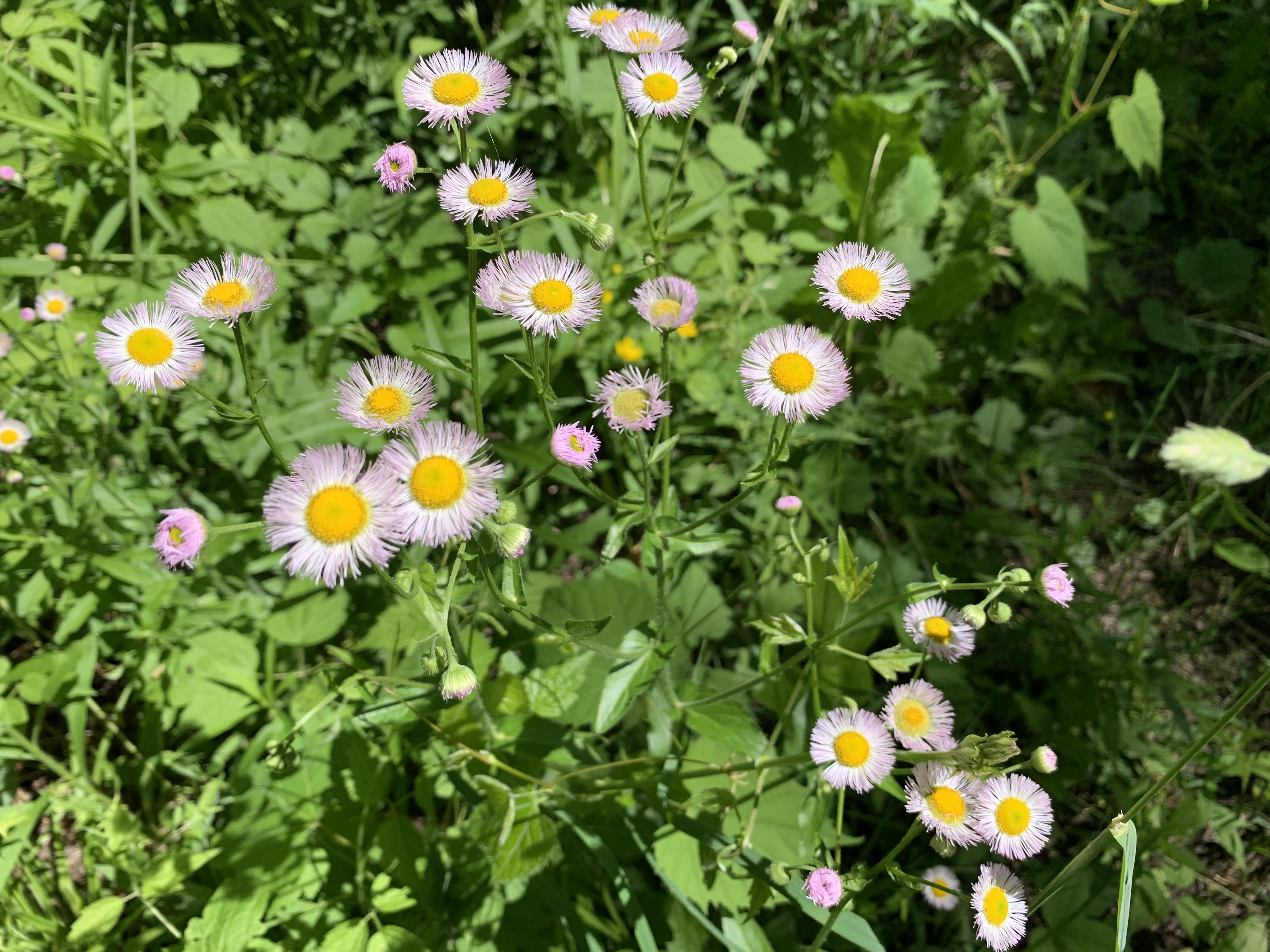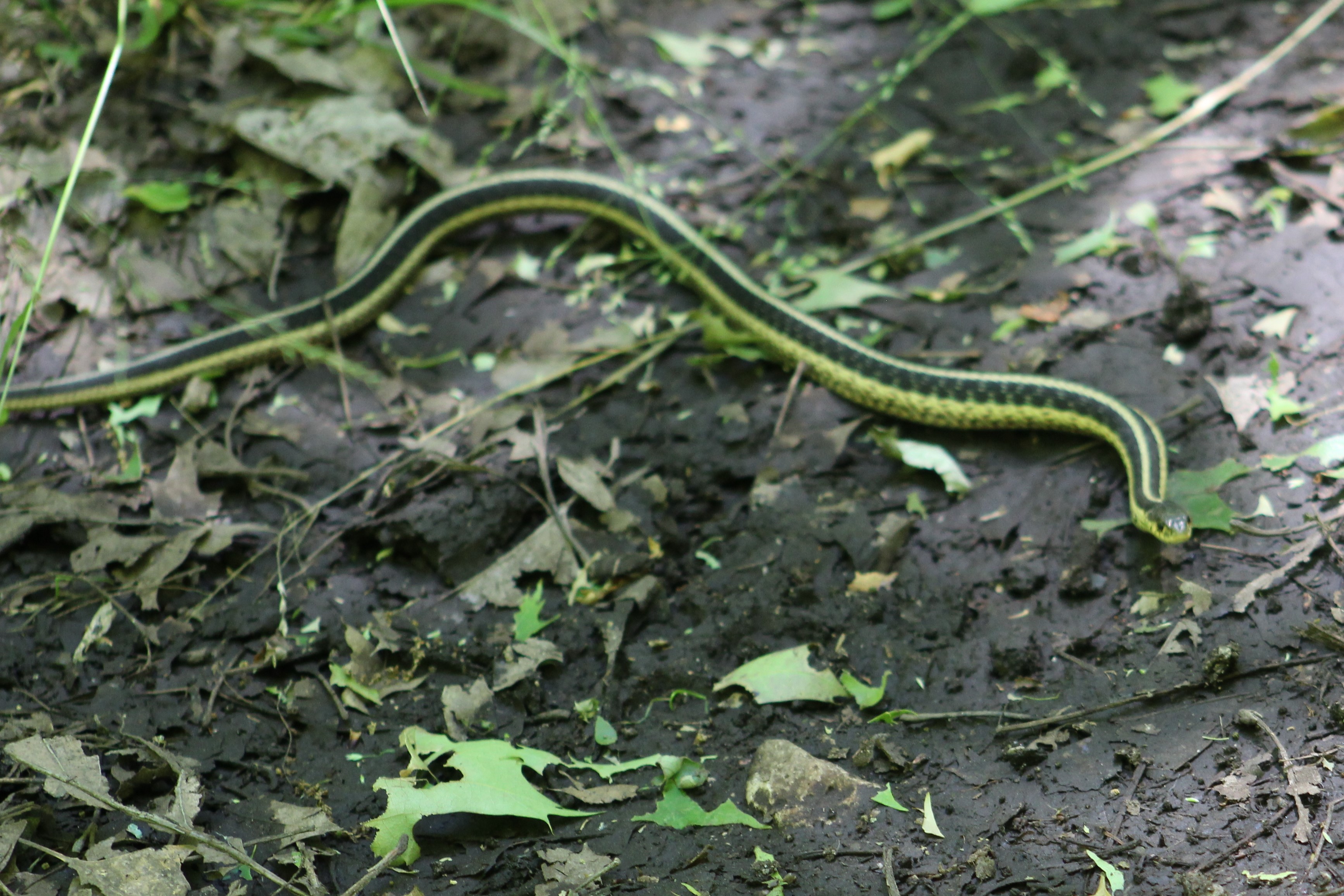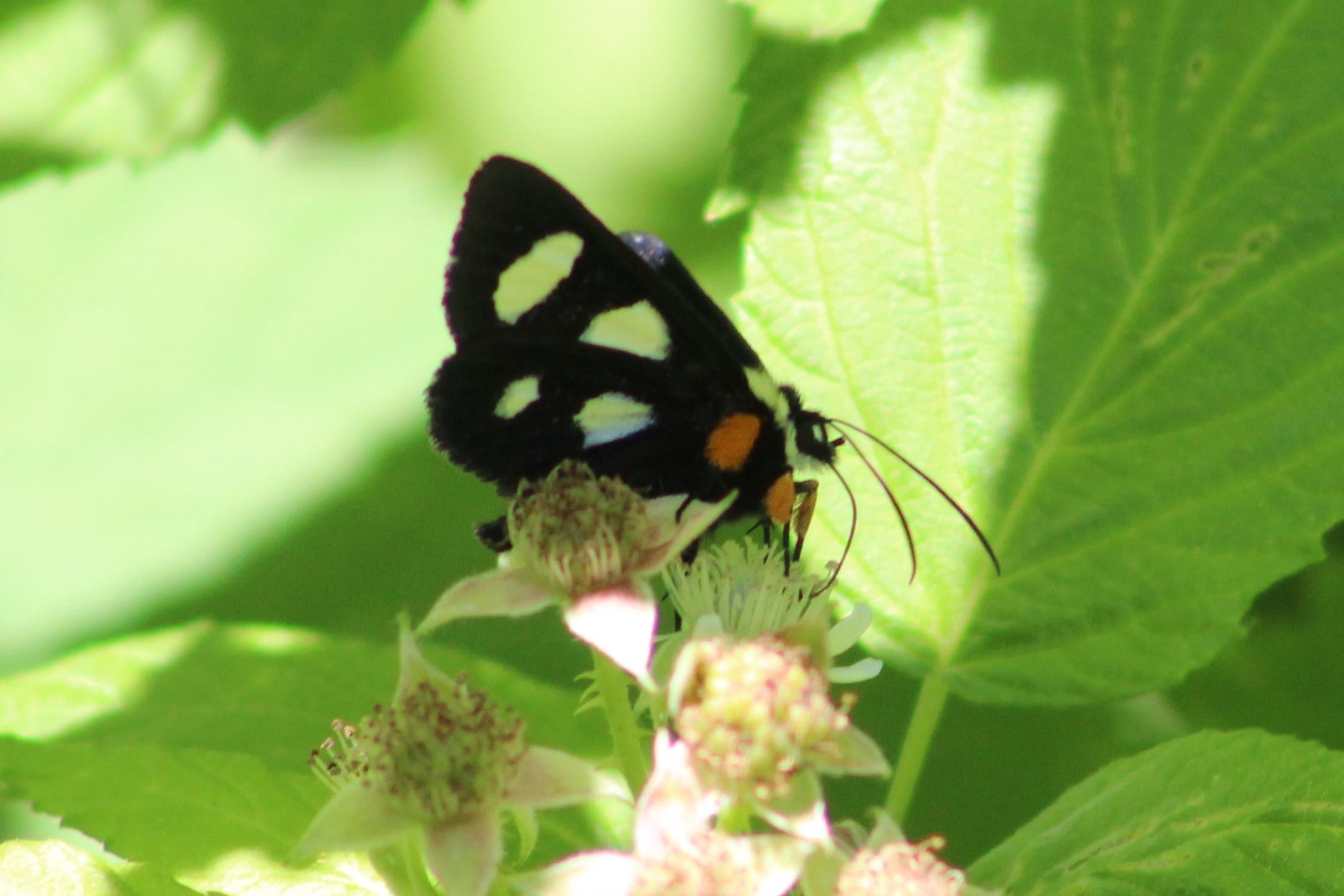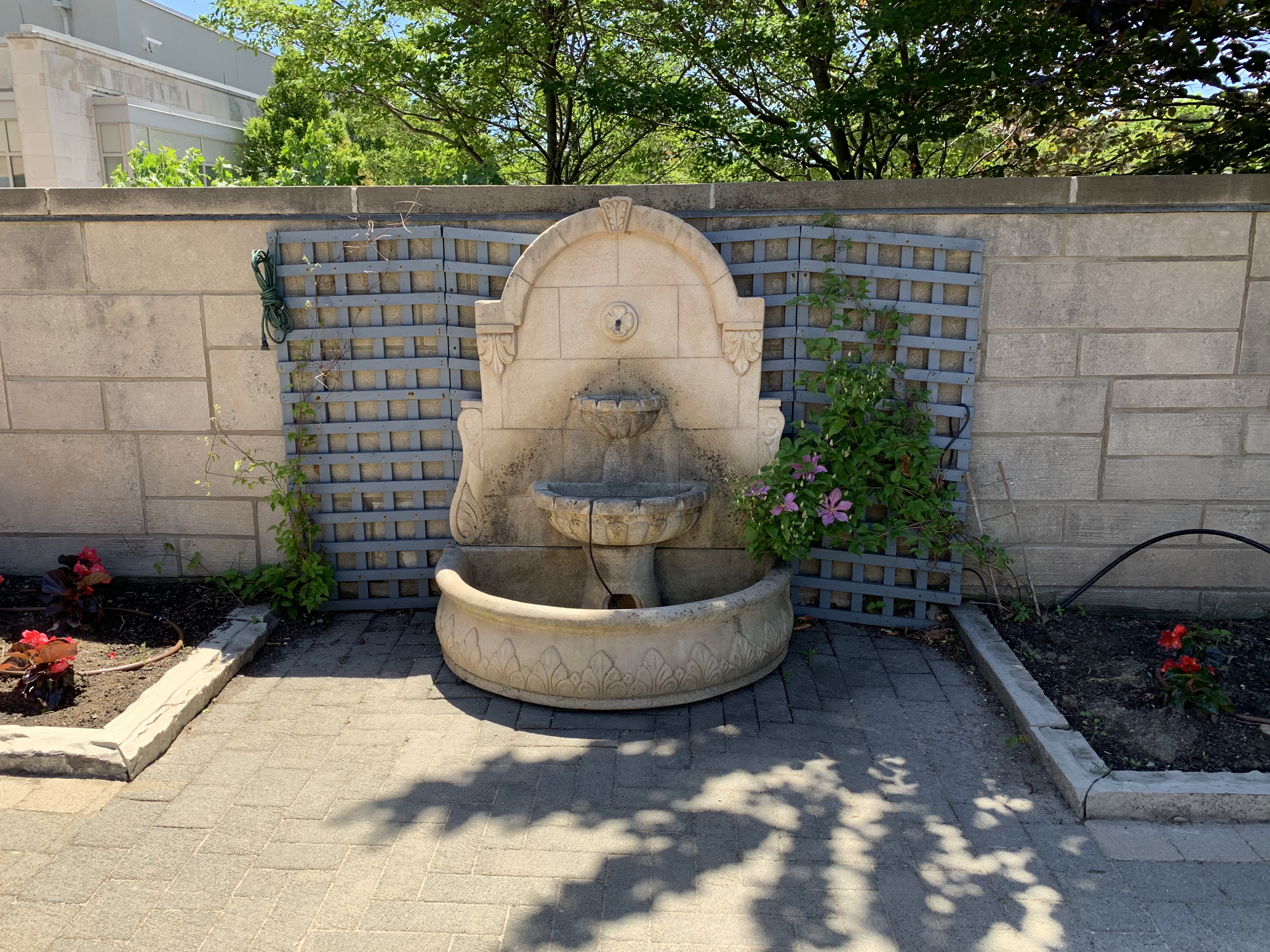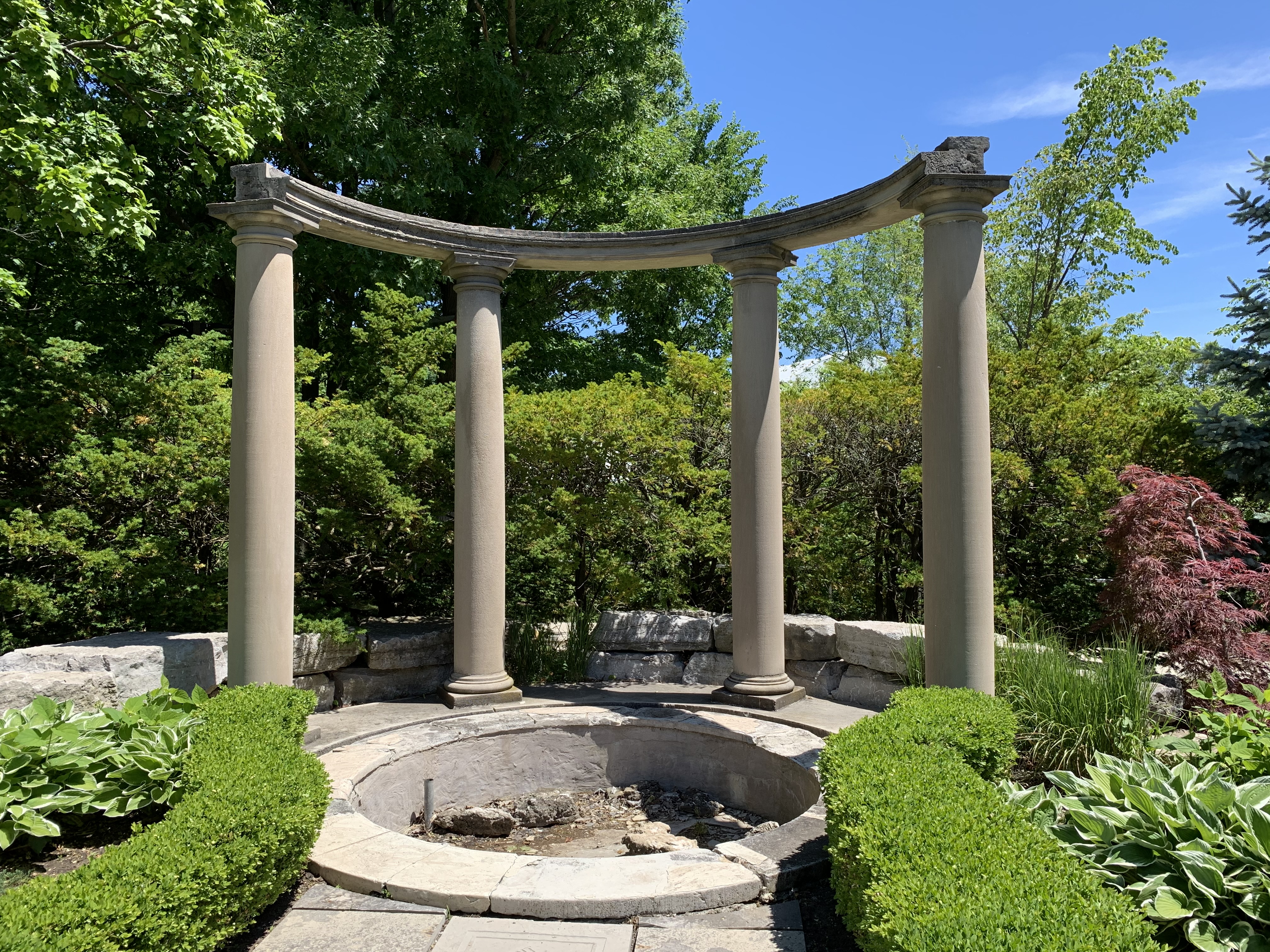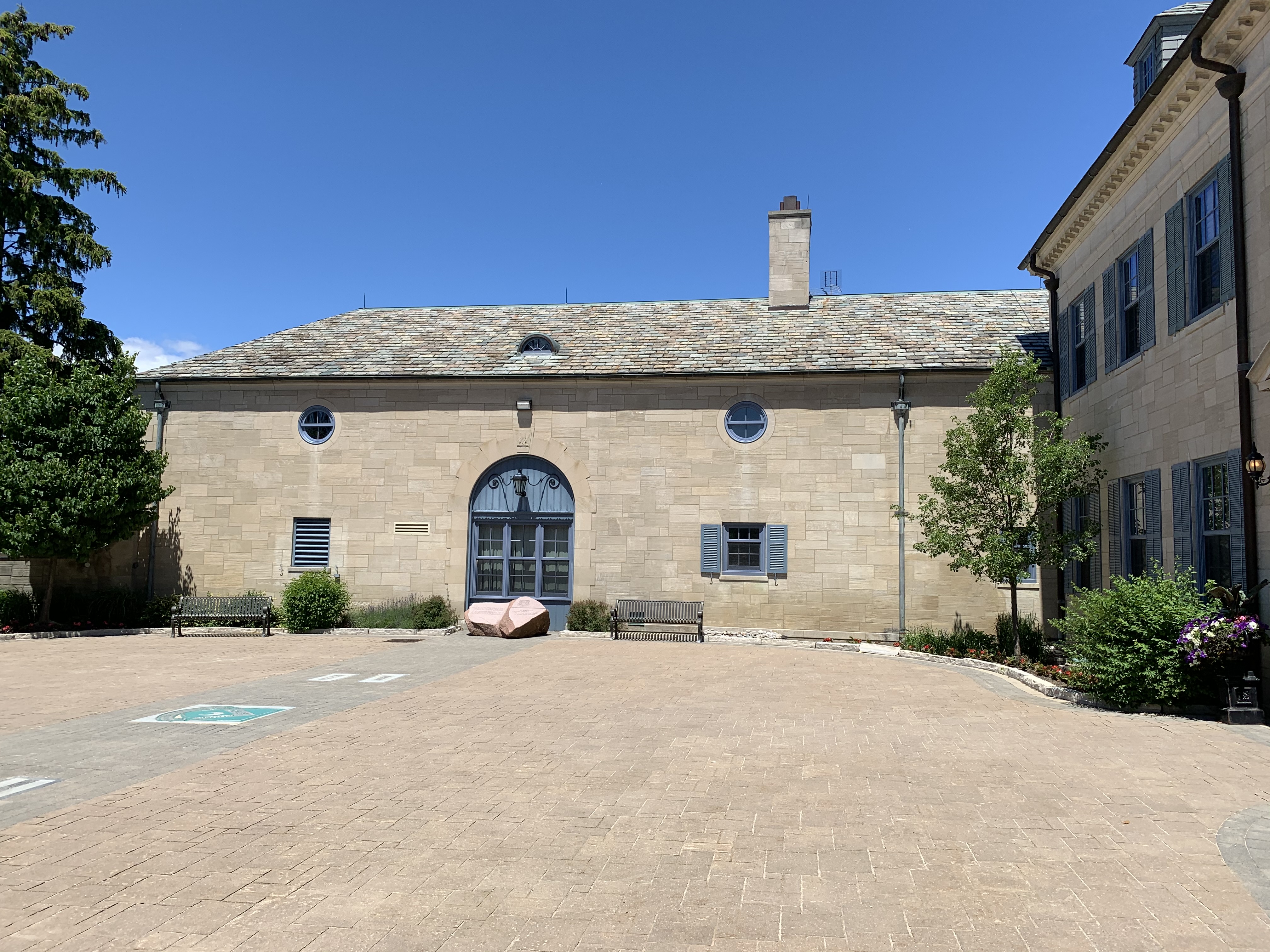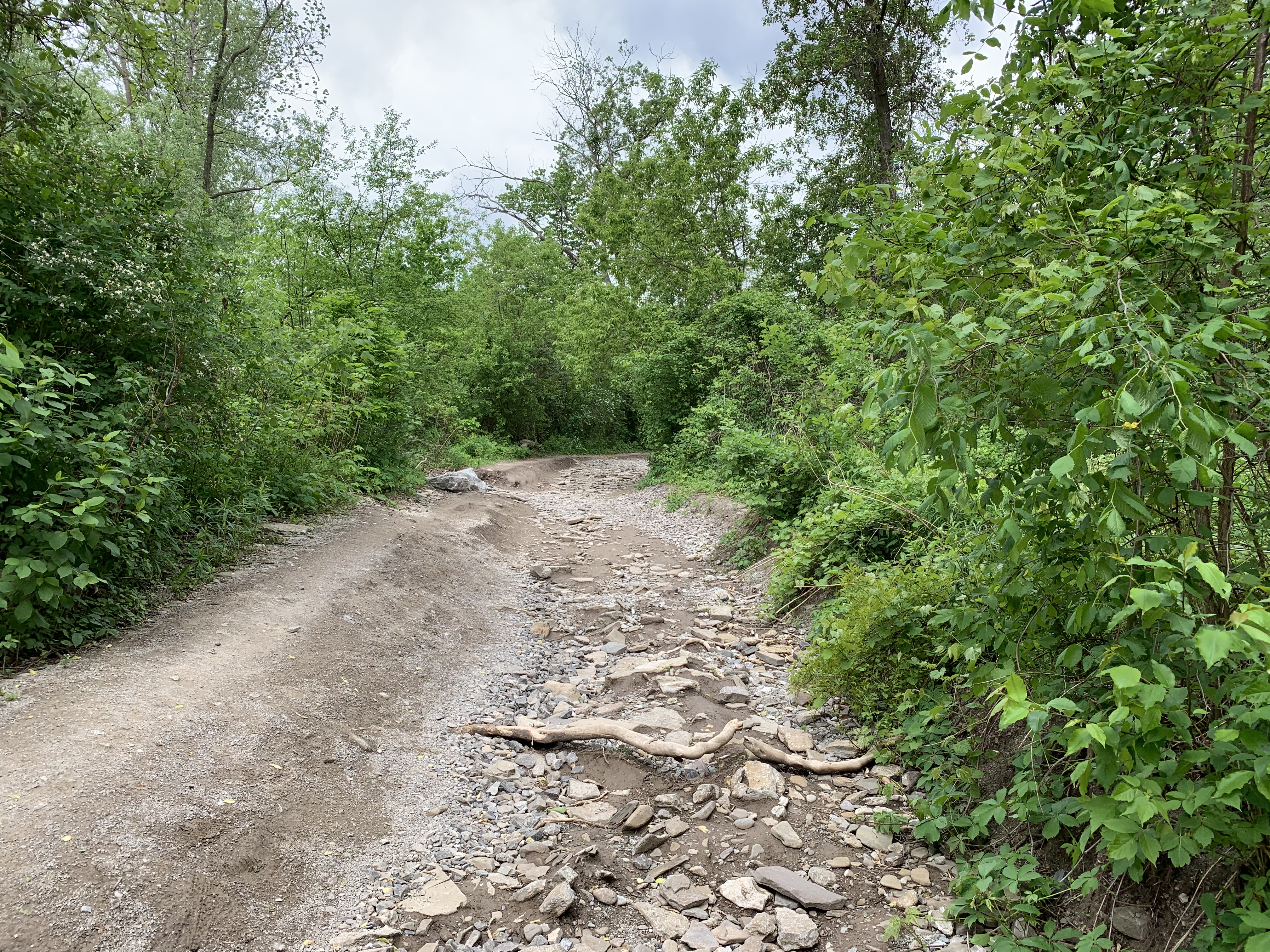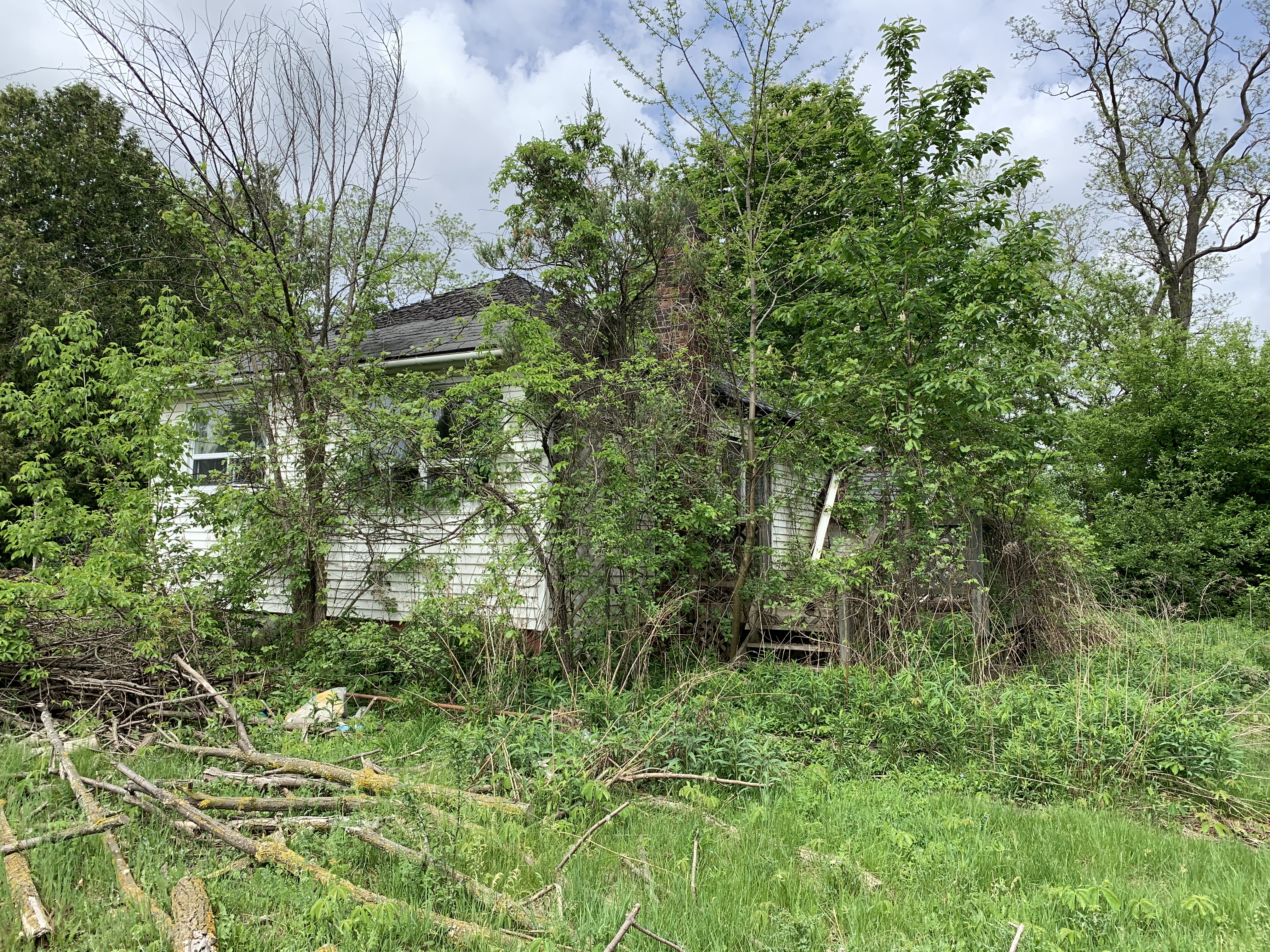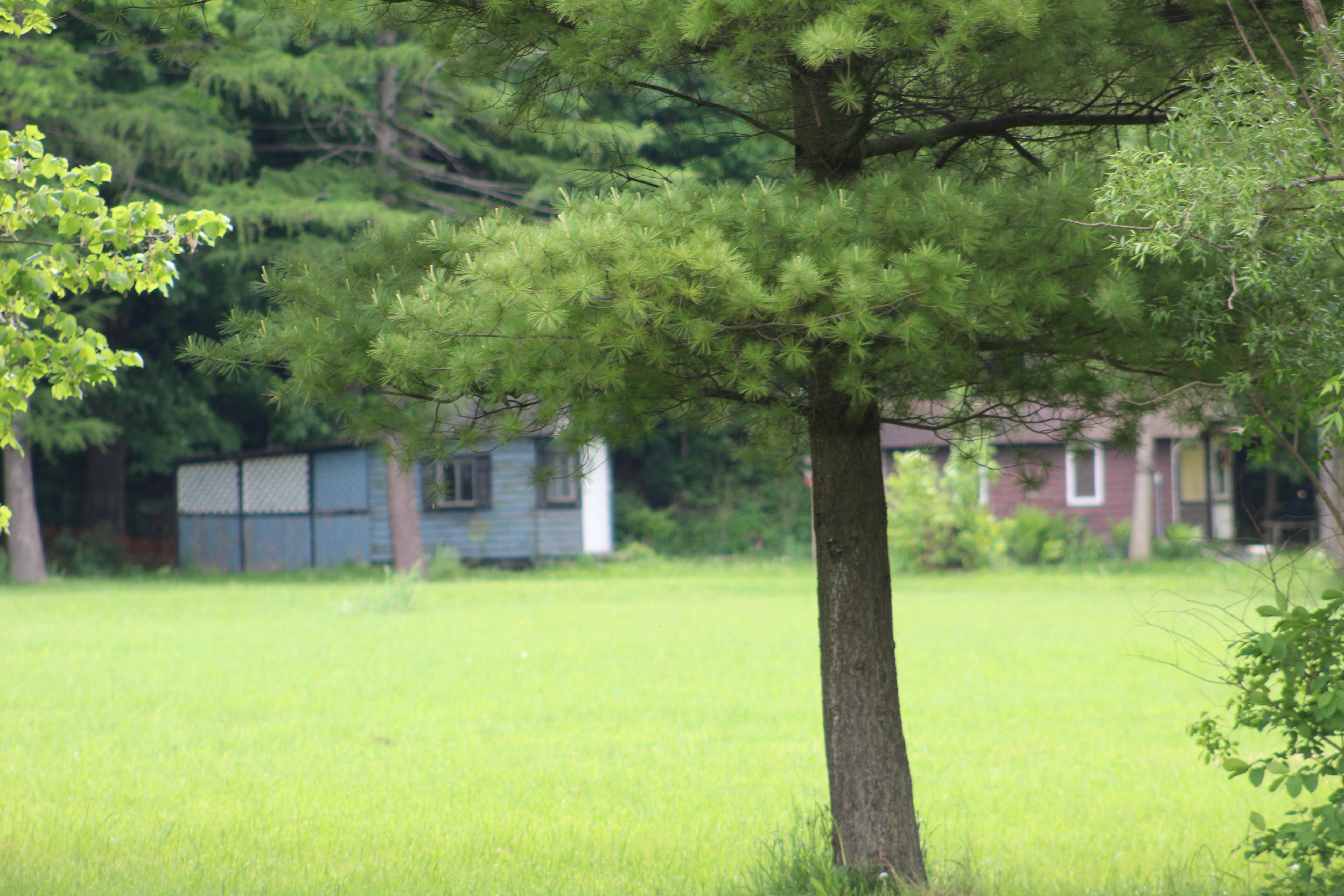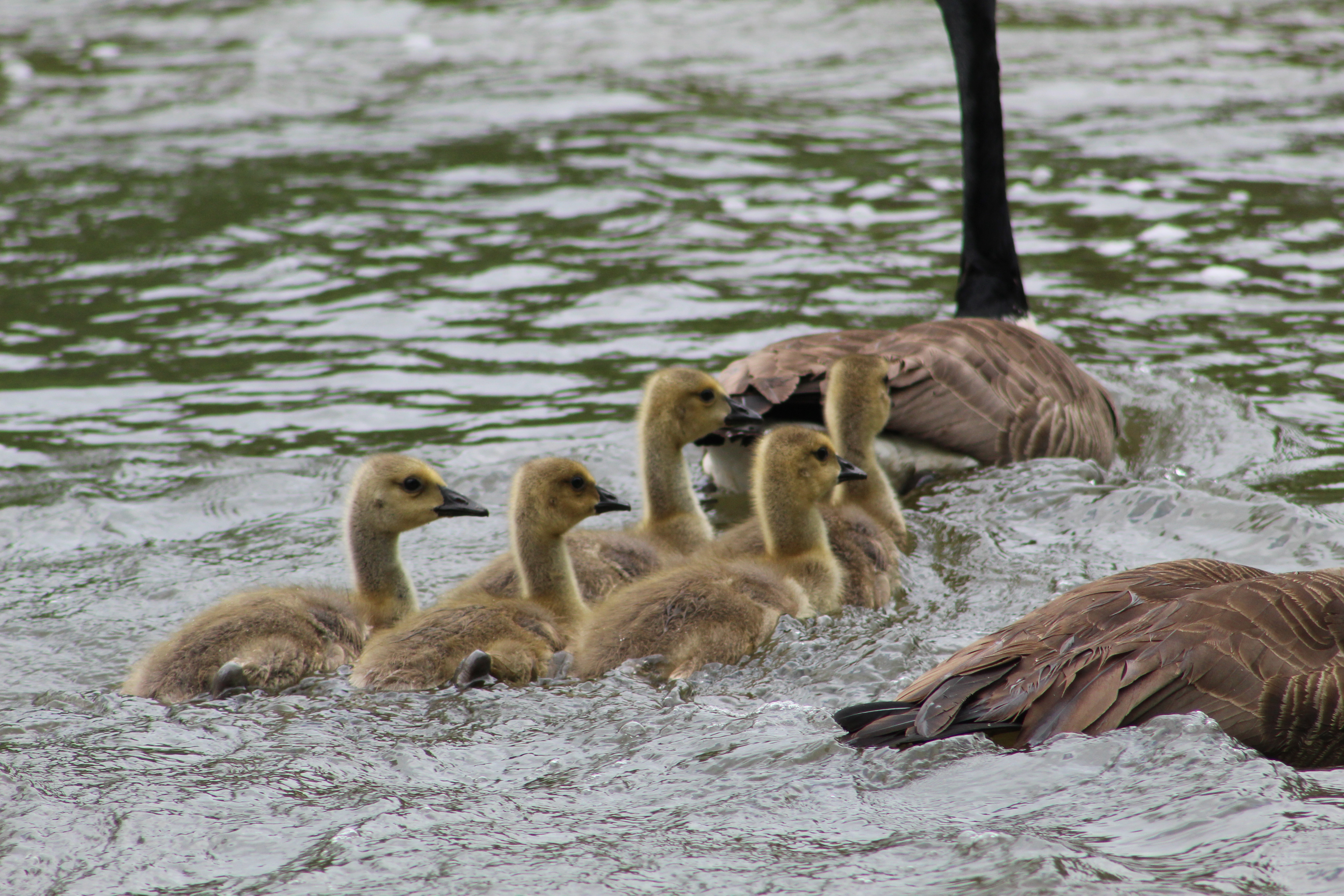Saturday, June 6, 2020
Uxbridge is known as the trails capital of Canada because of the 220 kilometres of trails that they manage near the community. Of particular interest on this gorgeous Saturday morning was Walker Woods. To explore we chose to park in the Glen Major Forest parking lot on 6th Concession so that we could do a brief exploration there and then follow the trail system north to Walker Woods. The trails in the forest are fairly well marked with numbered posts that each have a map on top. If you are following a specific route beware of side trails that are not marked as they will lead you astray.
Throughout Glen Major Forest there are extensive patches of Mayapples. It appears that many of the flowers either failed to open or were never pollinated because they have shriveled up. There are a few plants that have their single flower in full bloom.
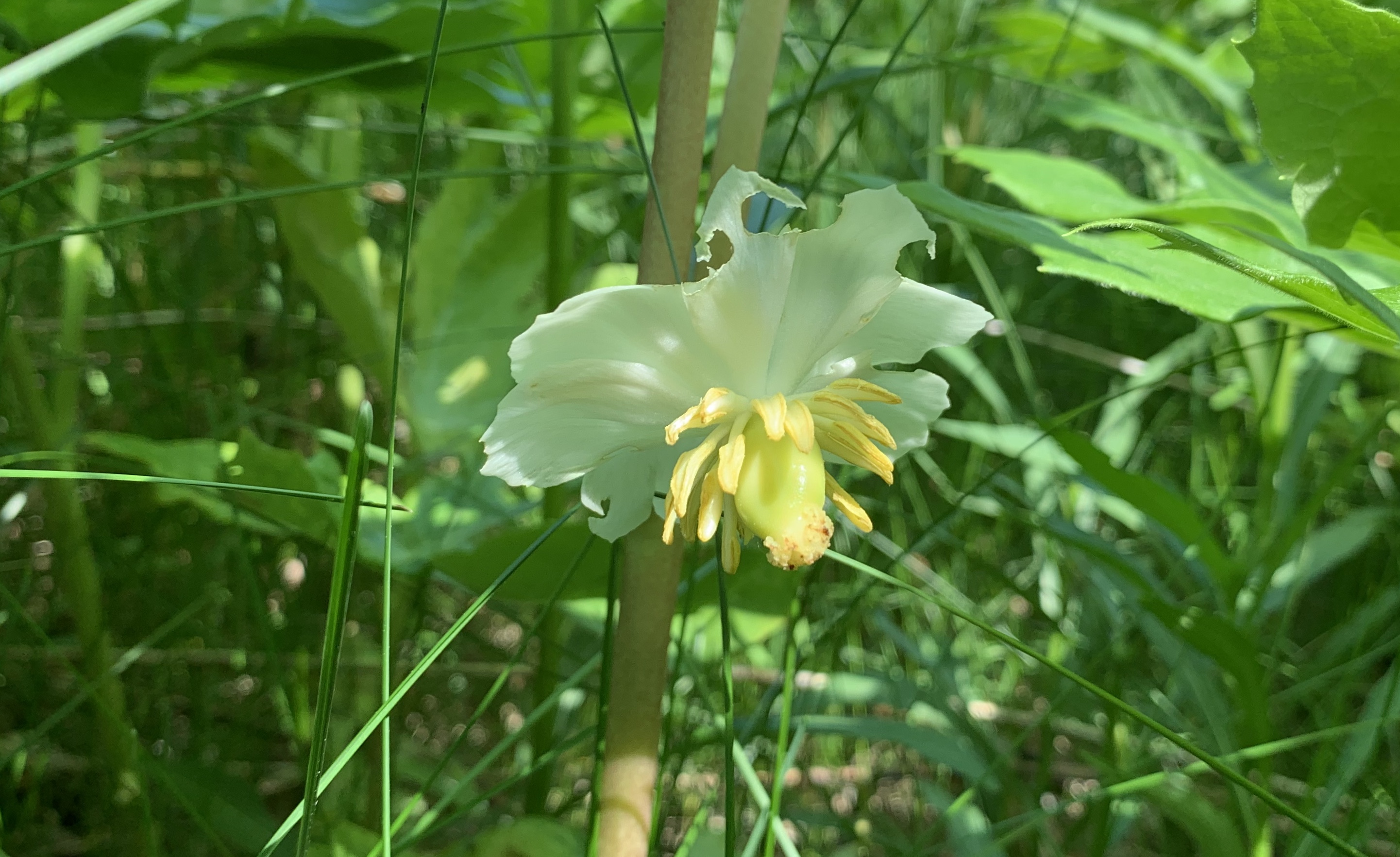
George Hopkins lived from 1818-1905 and in 1850 purchased 50 acres of land on Concession 6 in what is now Glen Major Forest. He cleared most of the land and began growing potatoes, turnips, peas, carrots, wheat and oats. He and his wife Margaret had nine children which they raised on the farm along with a variety of farm animals. Only foundations remain of their buildings.
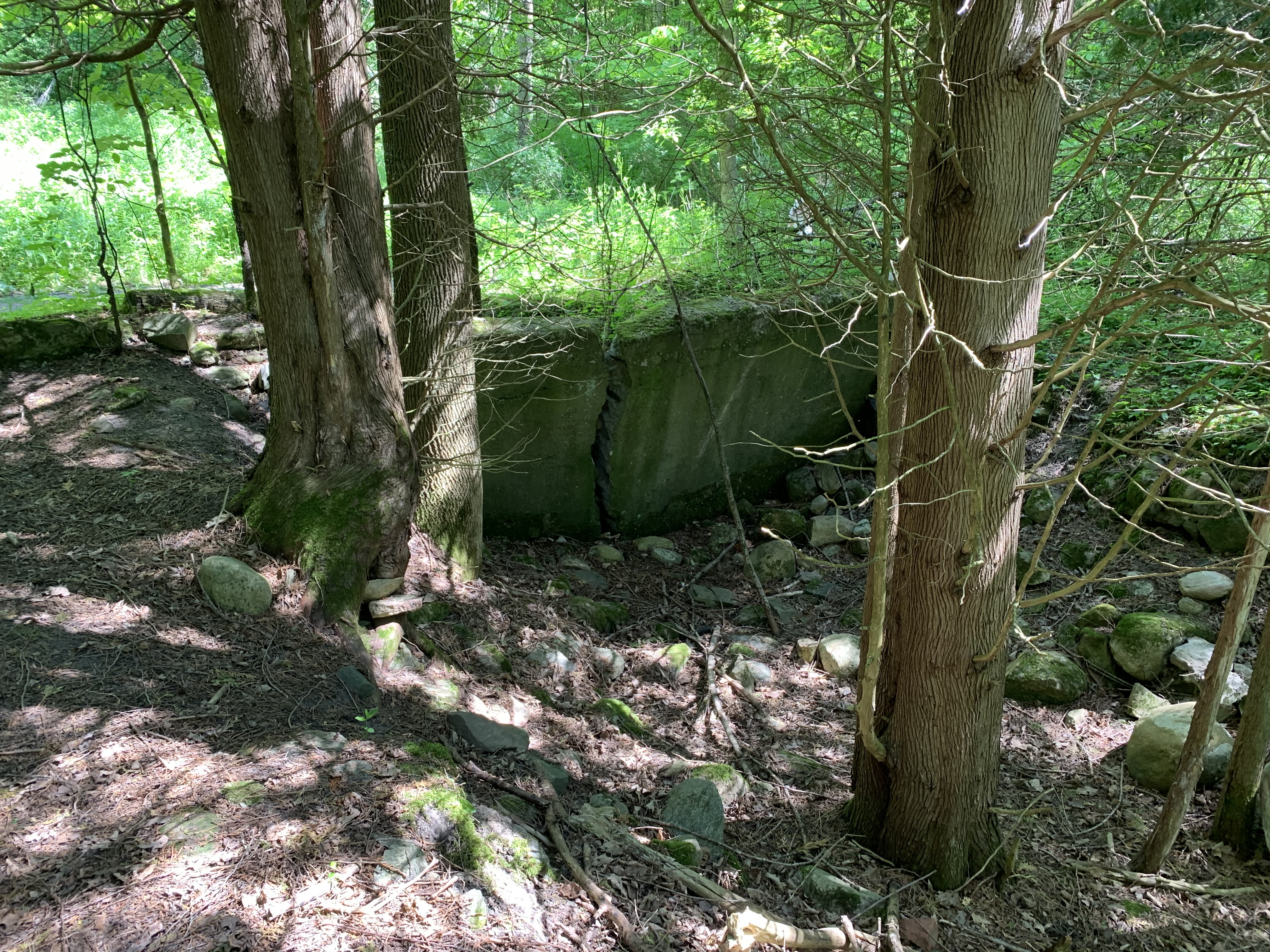
We then started to follow the trails north toward Walker Woods. The whole area had been open farmland at the turn of the twentieth century. Thin soil and poor farming practices had left much of it underutilized. James Walker was a Toronto lawyer who came to the area to ski in the 1930’s and took an interest in the abandoned farms in the area. He bought his first four acres on the 6th concession in 1934 for $350.00. When Walker returned home after the Second World War he started buying more properties in the area, eventually amassing 15 of them and 1,800 acres of land. He then began the process of planting forests on the property to help curb the erosion that was taking place.
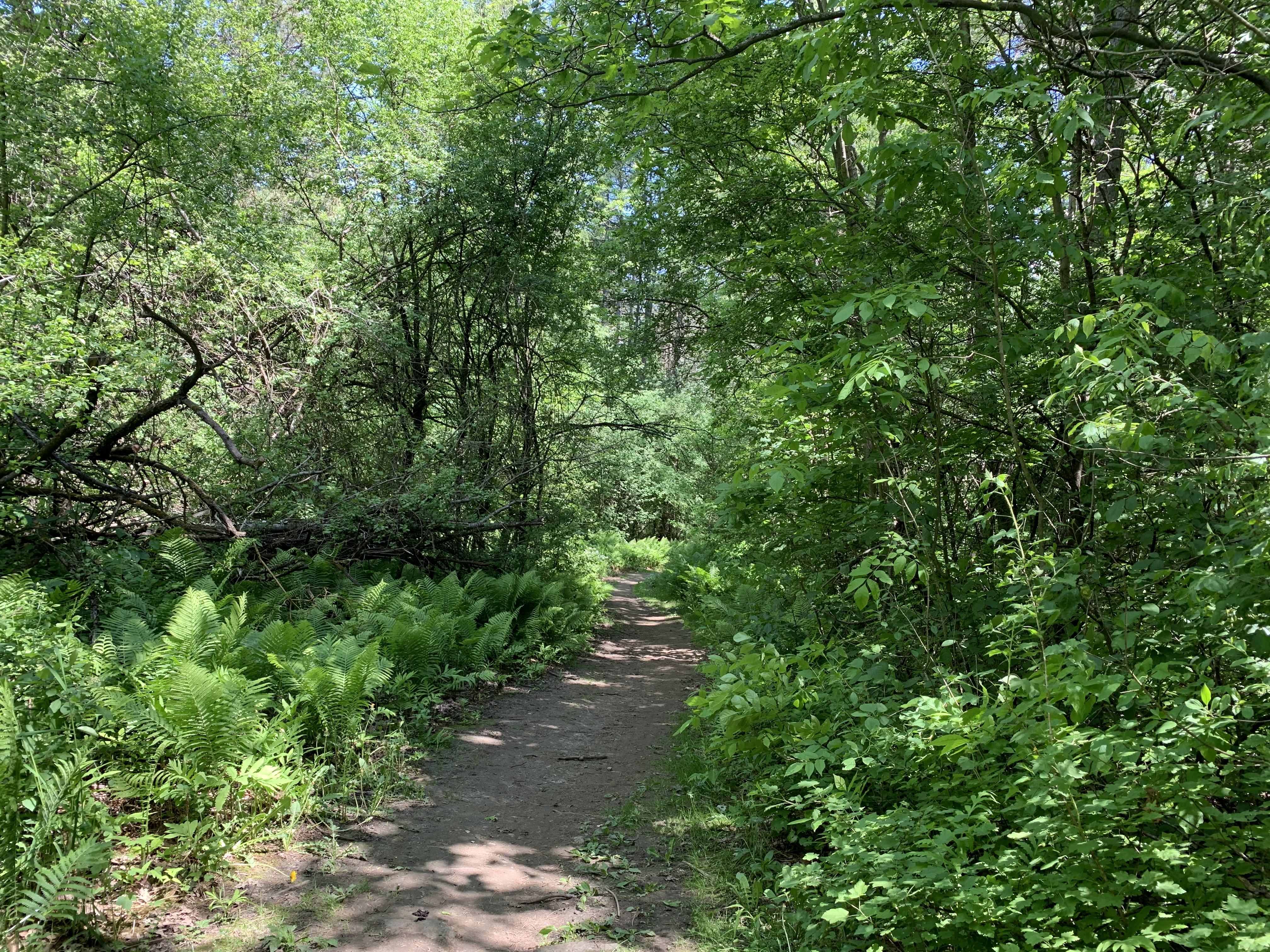
Red Columbine are highly toxic if eaten and it is even recommended that you handle them with gloves. The flower shape gives it the nick name Rock Bells. They are also known as Canada Columbine or Aquilegia Canadensis.

The bell shaped tubes, or spurs, are connected at the bottom and contain a sweet nectar that attracts hummingbirds, bees and hawk moths.

Hawk Moths are a family that includes 1,450 species that can be found all around the world. They are known for their rapid flying abilities which includes hovering. This makes them perfectly adapted for getting at the nectar in Red Columbine flowers.

Seeing a Canadian Flag hanging above the trail inspires a sense of patriotism even though anything else would be considered to be litter and make me upset. It is interesting how a piece of cloth with this specific pattern can provoke pride in the country we live in. For more on the design of our flag please see our National Flag Day post.

James Walker turned his properties into a forest by planting over 2,500,000 trees eventually starting a nursery and planting over 300,000 of his own saplings. He planted both Scotch and Red Pine as well as Maple, Beech, Black Walnut and Oak trees. Many parts of the trails make their way through straight rows of trees and follow old logging roads. Eventually the forest was mature enough that James started to make a profit out of it, He started selling Christmas Trees, fire wood, hardwood boards, cord wood and pulp wood. He build several structures for his venture that still remain in the forest including the drying shed where wood was left to dry.
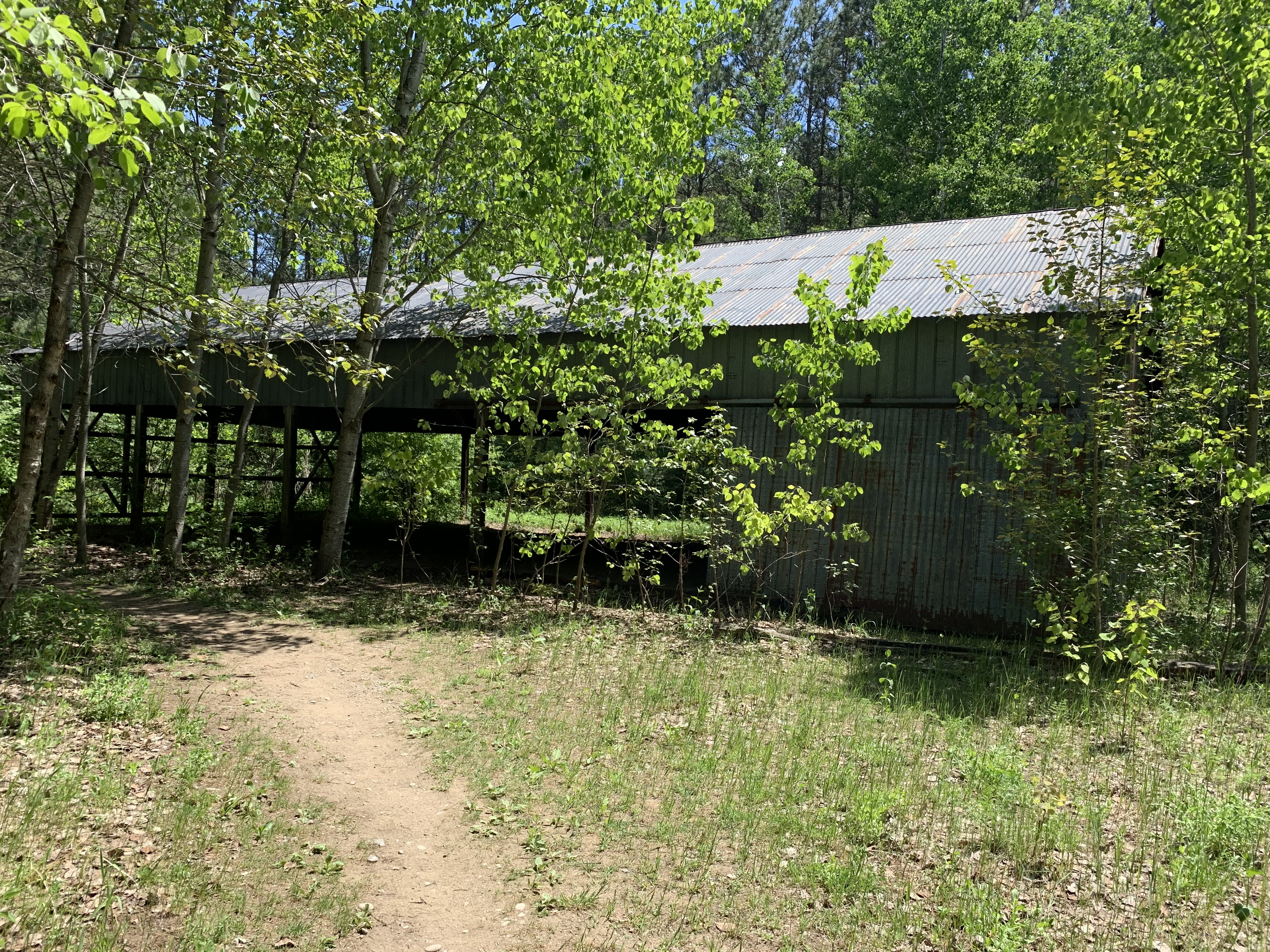
Walker created some of his own equipment including an early home made version of a log-splitter. Inside the old drying shed is a single piece of equipment. Belts ran on both sides of the device which may have been used for finishing boards.

Outside the drying shed there are four cribs that were set up for drying wood on. These have been out of service for so long that new trees are growing up out of the middle of them.
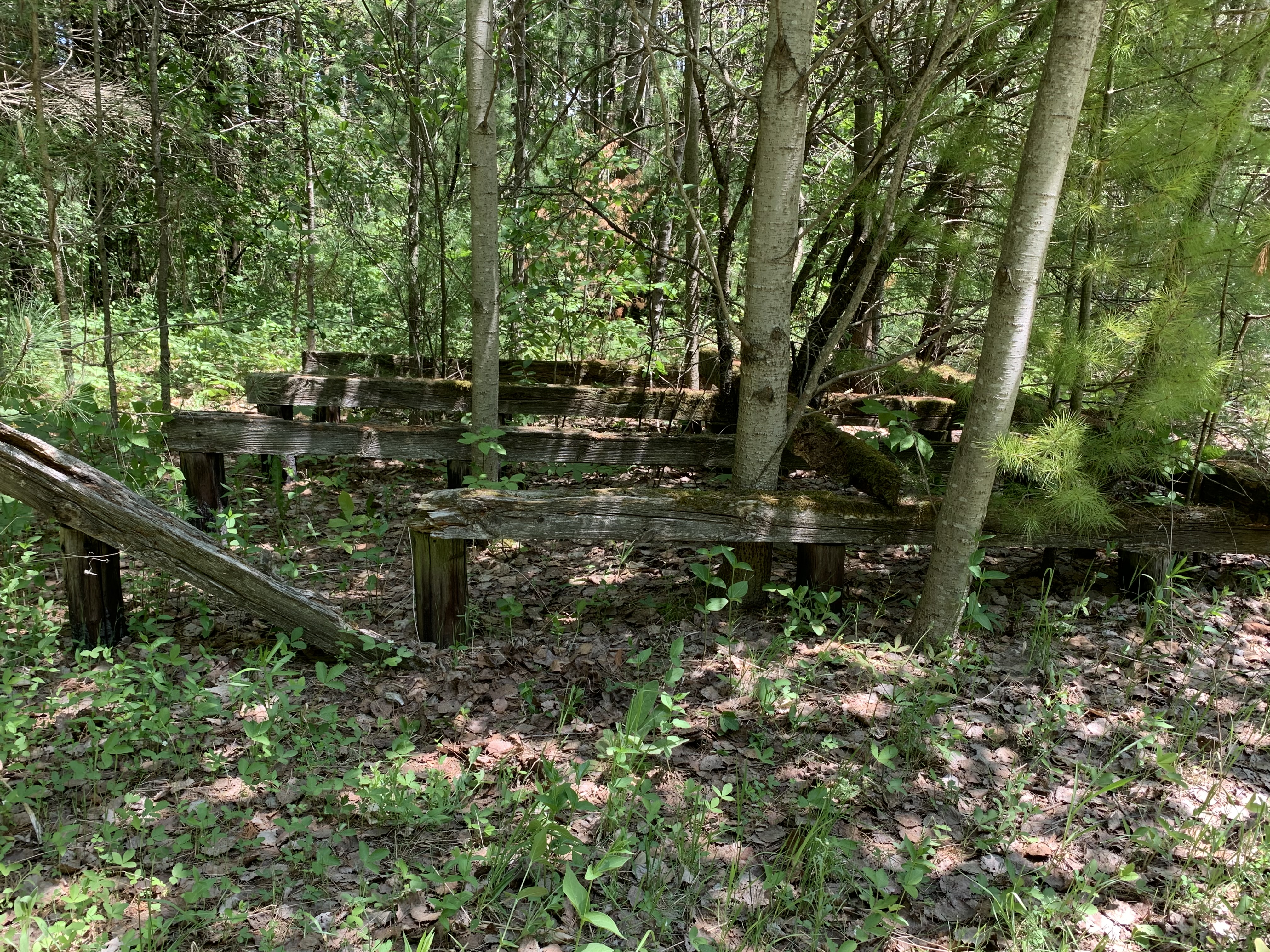
He had his own saw mill to cut the wood and it still stands a short distance away from the drying shed. Several other of Walkers buildings are in use by the Toronto Region Conservation Authority as equipment sheds and they stand just off the trail on a bit of property that is off limits to the public. The mill is interesting because it has a structure at the rear that resembles a grain elevator. It contains two bays that were fed by a single conveyor belt.

The elevator was likely used in the pulp wood side of the business. Trap doors on the bottom of each bay could be opened to allow the pulp wood to be dumped into trucks or trailers.
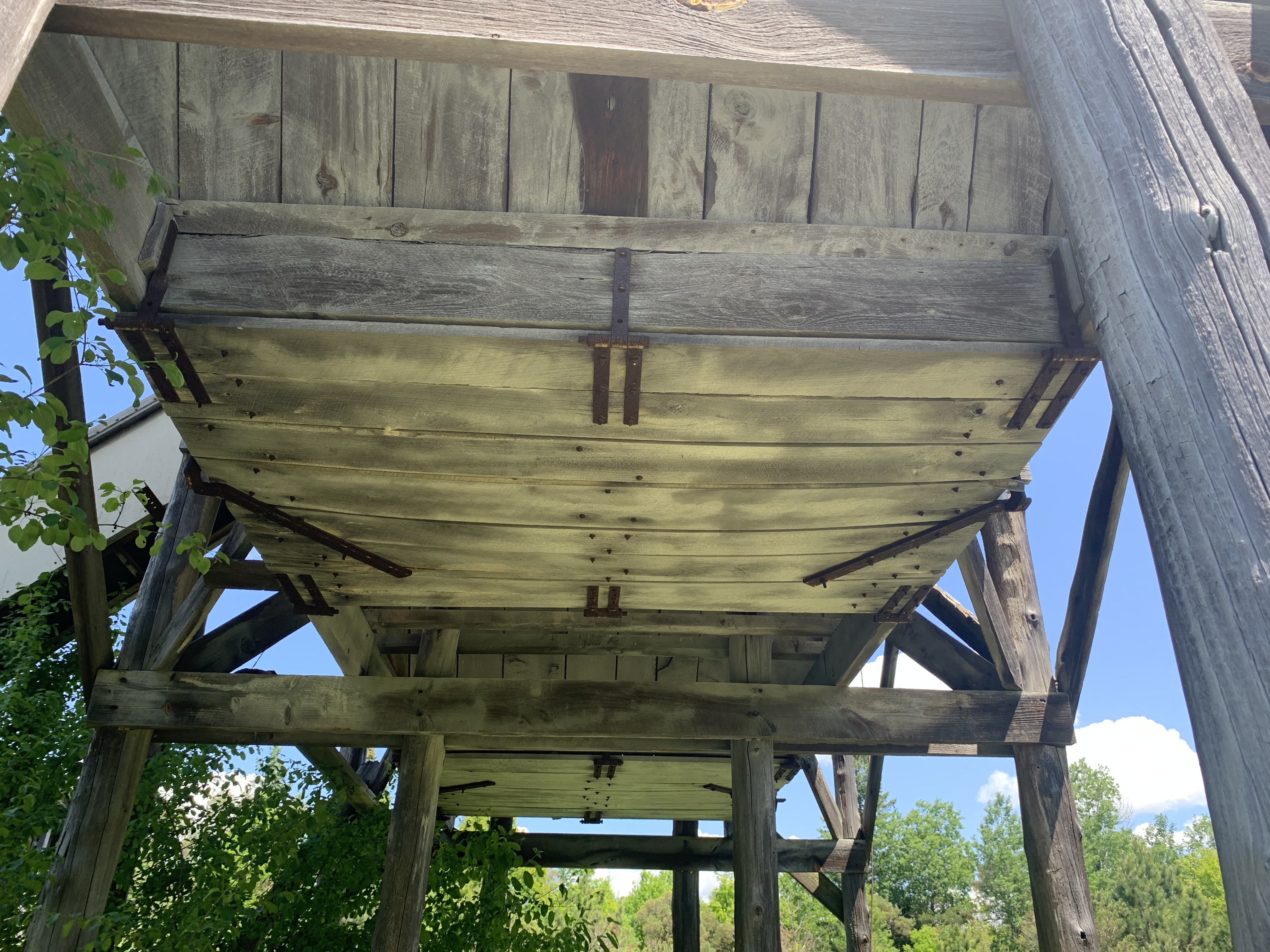
We returned to the drying shed and followed the trail west because we had decided to make our way back to the parking lot using the road. Along the way there are several wetlands and ponds and we saw these two painted turtles sunning themselves on a log.

Walker Woods and Glen Major Forest contain many trails, including some on the west side of Concession 6, which means that there is a lot more to explore on some future visit.
Here’s a link to the trail guide for all the local trails near Uxbridge.
Google Maps Link: Walker Woods
Like us at http://www.facebook.com/hikingthegta
Follow us at http://www.hikingthegta.com
\Also look for us on Instagram


